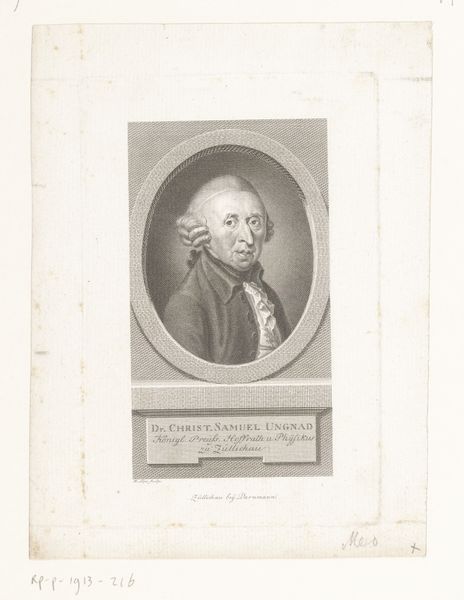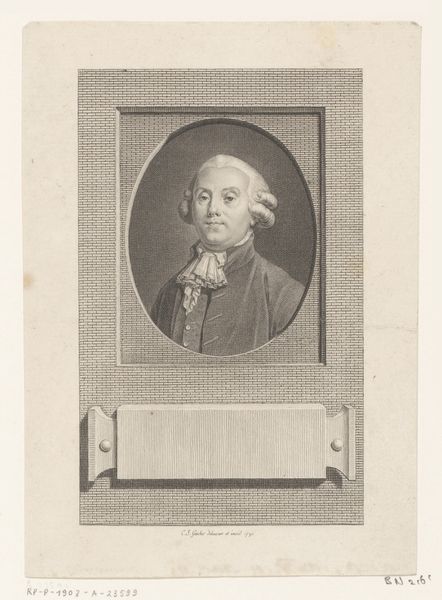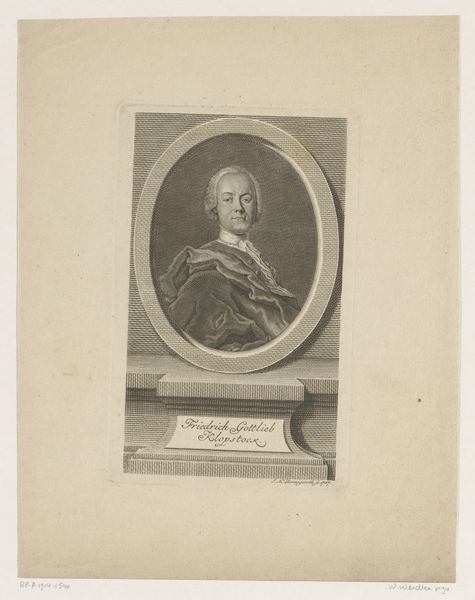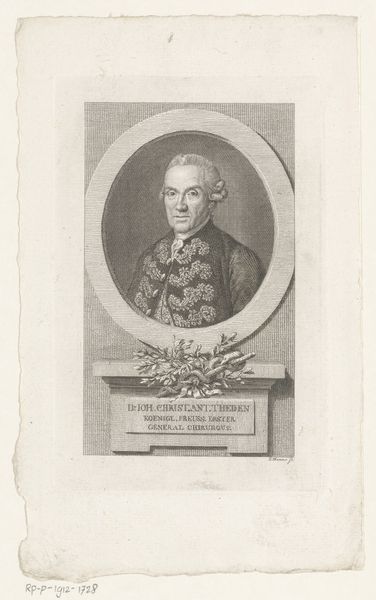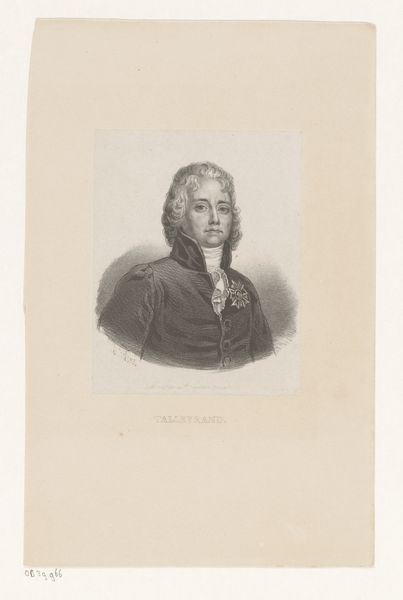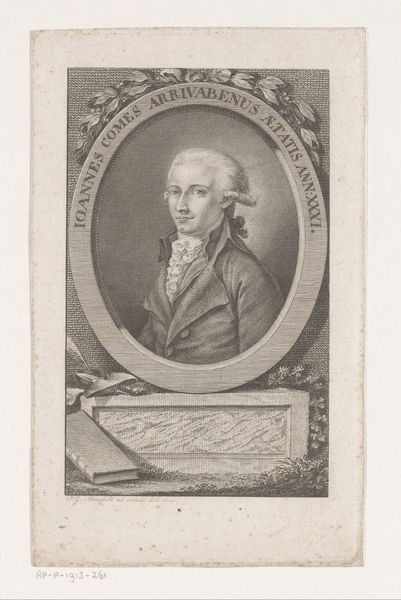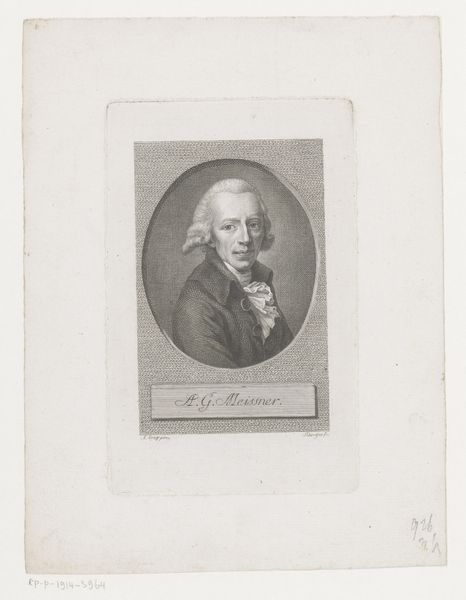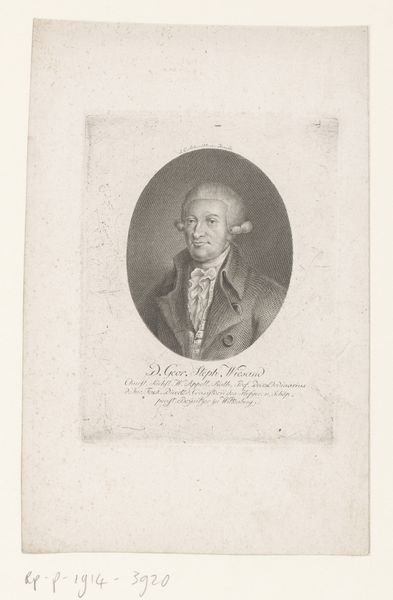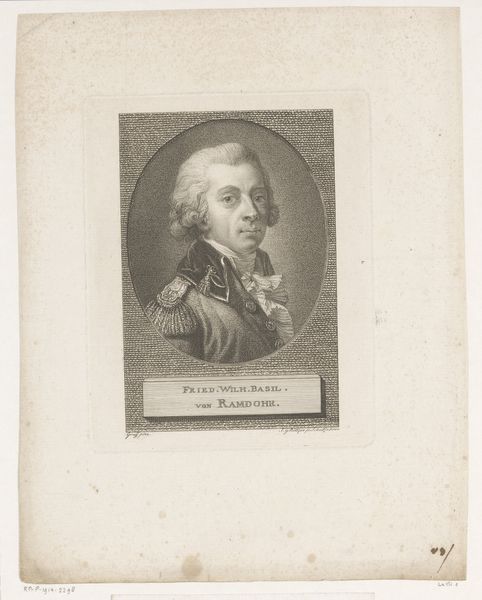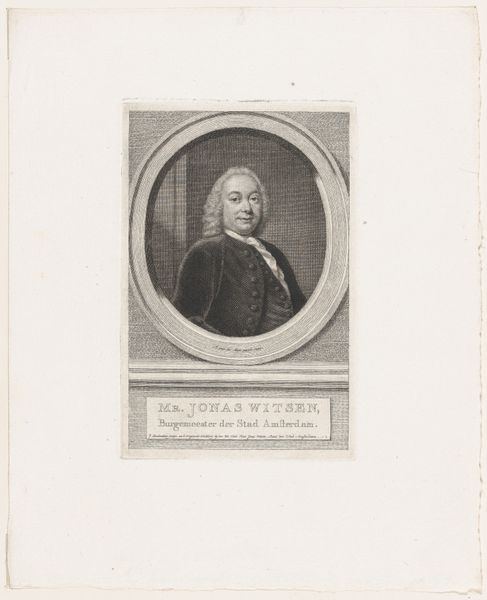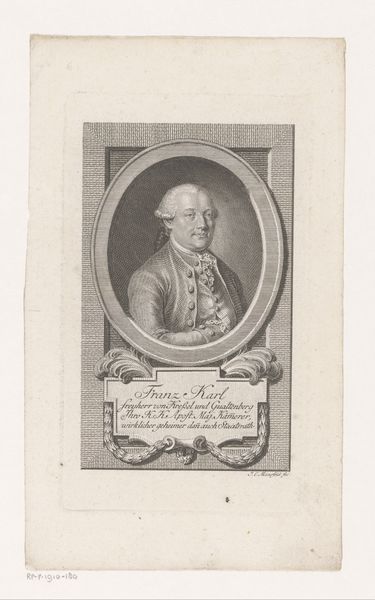
print, engraving
#
portrait
#
neoclacissism
# print
#
line
#
academic-art
#
engraving
Dimensions: height 270 mm, width 190 mm
Copyright: Rijks Museum: Open Domain
Editor: This is a print, "Portrait of Pierre Carlet de Marivaux," made sometime between 1746 and 1820, by Simon Charles Miger. It is an engraving. The composition feels quite formal. What strikes you when you look at it? Curator: The formal construction certainly dominates. Notice the rigorous geometry. We have an oval portrait contained within a rectangle. A plate bears the name. These shapes create a powerful sense of order. Semiotically, the frame acts as a signifier, distancing the subject and highlighting his importance. It encourages a specific, almost academic, reading. Editor: It’s interesting how the oval breaks up the severe rectangles! Can you elaborate on the line work? Curator: The engraving exhibits impeccable line work. Consider the density of hatching used to model the face, giving volume and light, against flatter lines creating planes for the plaque behind the portrait. The delicate line employed captures the lace cravat beautifully. Each stroke is carefully considered; observe how the line varies in thickness. It’s a study in control and precision, befitting the neoclassical style. Editor: I see it now. It is about how these contrasts work together, not simply an image of something or someone. What an intentional approach! Curator: Exactly. The artwork itself becomes a primary subject through material and application, rather than the subject itself. Consider the absence of bold color and relying on form. Editor: Thinking about just shapes, lines, and composition has really shifted my focus. I will try looking at art through this formalist lens in the future. Curator: It provides an additional tool for understanding the artist's choices. Focusing on formal relationships adds another layer to your understanding and appreciation.
Comments
No comments
Be the first to comment and join the conversation on the ultimate creative platform.

